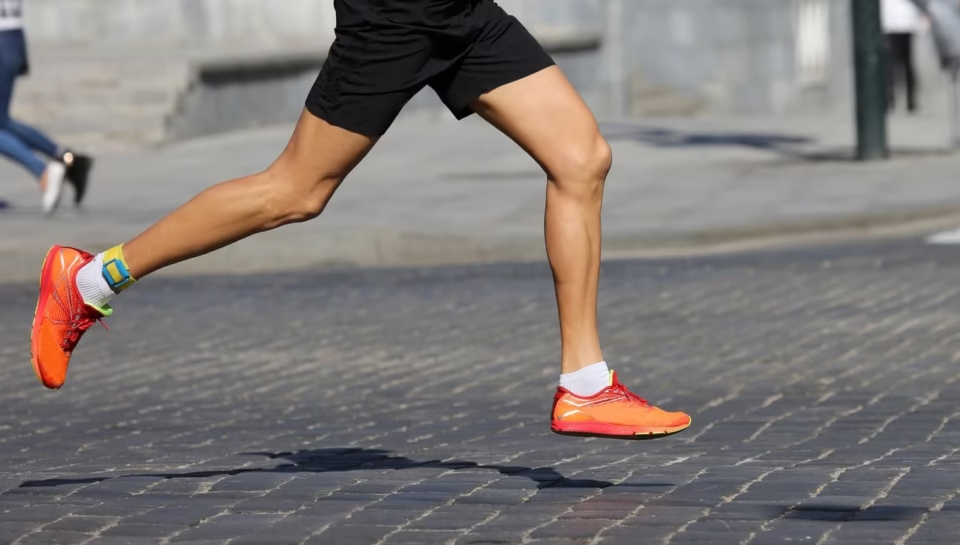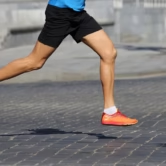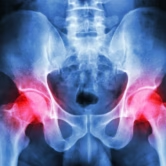
Running is a fantastic way to boost your physical fitness and enhance your mental well-being, yet it can also exert considerable strain on your body, potentially to muscle discomfort, tension and fatigue. Incorporating massage into a runner’s routine can offer substantial benefits, enhancing performance and promoting recovery. In this blog, we will examine the benefits of massage therapy for runners, including effective techniques, key focus areas, optimal frequency, and common pitfalls to be mindful of.
What Are The Benefits Of Massage Therapy For Runners?
Massage offers numerous benefits for runners by aiding in muscle recovery, enhancing flexibility, and reducing the risk of injury. Regular massage sessions can alleviate muscle soreness, improve circulation, and decrease the likelihood of developing muscle imbalances. These advantages, combined with stress reduction and improved athletic performance, make massage a vital component of a runner’s regimen.
- Muscle Recovery: Massage helps relax tight muscles and tissues, speeding up the recovery process after intense workouts. This can lead to reduced soreness and quicker return to training.
- Enhanced Circulation: By boosting blood flow, massage facilitates the delivery of essential nutrients to muscles while assisting in the removal of waste products, which plays a vital role in muscle repair and rejuvenation.
- Injury Prevention: Regular massages can identify areas of tension and tightness, reducing the risk of strains and other injuries by keeping muscles pliable and balanced.
- Flexibility Enhancement: Massage therapy can improve joint range of motion and overall flexibility, which is essential for efficient running mechanics.
- Stress Reduction: The relaxation associated with massage can lower stress levels, promoting mental clarity and focus essential for training and racing.
- Performance Boost: By keeping muscles in optimal condition, massage can enhance overall athletic performance, allowing runners to train more effectively.
- Pain Relief: For those experiencing chronic pain, massage can provide relief by addressing muscle tension and promoting relaxation.
In summary, massage plays a crucial role in a runner’s health routine by aiding recovery, preventing injuries, and enhancing performance through improved circulation and flexibility.
Which Types Of Massage Are Best For Runners?
Runners can benefit from several types of massage, each offering unique advantages for muscle recovery and performance improvement. Deep tissue massage, sports massage, and Swedish massage are particularly beneficial for addressing specific muscle issues and promoting overall relaxation. These methods can be tailored to meet individual needs, ensuring the most effective treatment.
| Deep Tissue Massage | This technique focuses on realigning deeper layers of muscles and connective tissue. It’s especially beneficial for chronic tension and areas of tightness that can impede running performance. |
| Sports Massage | Designed specifically for athletes, sports massage incorporates techniques that prepare muscles for optimal performance, reduce fatigue, and relieve muscle swelling. |
| Swedish Massage | Known for its gentle approach, Swedish massage uses long strokes to improve circulation and promote relaxation, making it perfect for recovery days. |
| Trigger Point Therapy | By targeting specific tight points within muscles, this therapy can alleviate pain and improve muscle function, which is crucial for maintaining running efficiency. |
| Myofascial Release | This technique focuses on relieving tension in the connective tissues, helping to improve flexibility and reduce discomfort from prolonged running. |
Overall, runners should consider incorporating a mix of these massage types into their routine to address various needs, from relaxation to muscle tension relief.
What Muscles Should Runners Focus On During A Massage?
Runners should focus on massaging key muscles that are heavily involved in running to enhance performance and recovery. The quadriceps, hamstrings, calves, and glutes are primary areas to target due to their significant role in running mechanics and susceptibility to tension and fatigue.
- Quadriceps: These muscles are crucial for knee extension and absorbing impact during running. Massaging them can relieve tension and prevent injuries like tendinitis.
- Hamstrings: Located at the back of the thigh, hamstrings play a key role in propulsion. Regular massage can prevent strains and maintain flexibility.
- Calves: Calf muscles are heavily engaged in running, and massage can help alleviate tightness and prevent Achilles tendon issues.
- Glutes: These muscles stabilize the pelvis and support movement. Targeted massage can enhance strength and prevent imbalances that lead to injuries.
- Iliotibial (IT) Band: The IT band helps stabilize the knee. Massaging this area can alleviate tightness and prevent issues like IT band syndrome.
- Hip Flexors: Keeping these muscles relaxed and flexible is vital for maintaining stride efficiency. Massage can prevent tightness and associated discomfort.
In brief, focusing on these muscle groups during massage can significantly enhance a runner’s performance and reduce the risk of injury by maintaining muscle balance and flexibility.
How Often Should Runners Get A Massage?
Runners should consider incorporating massage into their routine regularly, with frequency depending on individual needs and training intensity. For those training intensely or experiencing muscle soreness, weekly massages can be beneficial. This frequency helps maintain muscle health, enhances recovery, and prevents injuries. However, for casual runners, bi-weekly or monthly sessions might suffice to keep muscles in good condition and support overall performance.
Paying attention to your body’s signals is essential; you may find that increasing your training frequency is beneficial during demanding workout phases or as you prepare for an upcoming race. Runners should also consider the type of massage needed, as deeper massages might require longer recovery in between sessions. Regular communication with a massage therapist can help tailor the frequency and type of massage to individual needs, ensuring the best outcomes for muscle recovery and performance.
In summary, the frequency of massages should be personalized, taking into account the runner’s training intensity, recovery needs, and personal preferences to optimize benefits.
Is It Better To Get A Massage Before Or After A Run?
Both pre-run and post-run massages offer distinct benefits tailored to different needs. Pre-run massages can help prepare the muscles, improve flexibility, and enhance performance by stimulating blood flow. On the other hand, post-run massages focus on recovery, reducing muscle soreness, and promoting relaxation after intense physical activity.
A pre-run massage should be lighter and more stimulating, focusing on warming up the muscles and increasing circulation. This type of massage can enhance mobility and reduce the risk of injury during the run. In contrast, a post-run massage is typically deeper and more focused on reducing tension and promoting recovery. It helps in flushing out metabolic waste and reduces delayed onset muscle soreness (DOMS).
In short, while both pre-run and post-run massages have their merits, the choice depends on the runner’s specific goals—whether it’s enhancing performance before a run or promoting recovery afterward.
Can Self-Massage Benefit Runners?
Self-massage can be a valuable tool for runners, offering benefits like improved muscle recovery, reduced tension, and increased flexibility. Techniques such as foam rolling and targeted pressure point work can be easily incorporated into a runner’s routine for ongoing muscle maintenance.
- Foam Rolling: This technique helps release muscle tightness and improve blood flow. It’s especially beneficial for large muscle groups like the quads and calves.
- Pressure Point Therapy: Using tools or fingers to apply pressure to specific points can relieve tension and improve muscle function.
- Stretching Combined with Self-Massage: Integrating stretching with self-massage techniques can enhance flexibility and muscle relaxation.
- Convenience and Cost-Effectiveness: Self-massage allows runners to address muscle issues anytime without the need for appointments, making it a cost-effective option.
- Enhanced Body Awareness: Regular self-massage helps runners become more attuned to their bodies, identifying areas that need attention before they become problematic.
In brief, self-massage is a practical and effective addition to a runner’s routine, offering flexibility, cost savings, and enhanced muscle health.
What Are The Common Mistakes Runners Make With Massage Recovery?
Runners often make mistakes with massage recovery that can hinder their progress and potentially lead to injuries. Overlooking hydration, skipping post-massage rest, and ignoring pain thresholds are common pitfalls. Addressing these issues can enhance the effectiveness of massage in a runner’s routine.
| Neglecting Hydration | Failing to hydrate adequately after a massage can impede recovery. It’s essential to drink water to help flush out toxins released during the session. |
| Skipping Rest | Runners might resume intense activity too soon after a massage, not allowing the body sufficient time to recover and potentially worsening muscle soreness. |
| Ignoring Pain Signals | Pushing through pain during or after a massage can lead to further injury. It’s crucial to listen to the body and communicate discomfort to the massage practitioner. |
| Inconsistent Massage Routine | Sporadic massage sessions provide minimal benefits. Consistency is key to achieving long-term results. |
| Inadequate Warm-Up or Cool-Down | Not integrating proper warm-up or cool-down routines can undermine the benefits of massage by allowing muscle tightness to persist. |
By steering clear of these frequent pitfalls, you can enhance the advantages of massage, which may lead to improved performance and a lower likelihood of injuries.
What Are The Signs That A Runner Needs A Massage?
Runners might need a massage when experiencing persistent muscle tightness, fatigue, or reduced performance. Regularly assessing these signs can help runners incorporate massage at the right times to prevent injuries and maintain optimal performance.
- Persistent Muscle Soreness: Ongoing soreness that doesn’t subside with rest might indicate the need for a massage to relieve tension and promote recovery.
- Decreased Performance: A sudden drop in performance levels could be a sign of muscle fatigue or imbalance, warranting a massage to restore function.
- Increased Stress Levels: Experiencing heightened stress or anxiety can affect running performance. Massage can help by promoting relaxation and mental clarity.
- Reduced Flexibility: Difficulty in maintaining normal flexibility can be addressed with targeted massage therapy, improving range of motion.
- Chronic Fatigue: Feeling unusually fatigued despite adequate rest might indicate the need for muscle recovery support through massage.
In summary, recognizing these signs can help runners maintain their training regimen effectively while minimizing the risk of injury and enhancing performance.
Run Faster, Recover Faster
Massage is a powerful tool for runners, offering numerous benefits from muscle recovery to injury prevention. By understanding the types of massage available, the key muscles to focus on, and the appropriate frequency, runners can optimize their performance and recovery.
At BeActive Physio in Oakville, our team is dedicated to providing personalized massage therapy services. Contact us to learn how we can support your running journey with professional care and tailored treatment plans.
Frequently Asked Questions
How Does Massage Improve Running Performance?
Massage enhances running performance by improving circulation, reducing muscle tension, and increasing flexibility. These benefits help runners train more effectively and reduce the risk of injury.
Can Massage Help With Running-Related Injuries?
Yes, massage can alleviate symptoms associated with running-related injuries by addressing muscle imbalances and promoting recovery, facilitating a quicker return to training.
What Is The Best Time To Schedule A Massage Session?
The best time depends on individual preferences and training schedules. Many runners benefit from post-run massages for recovery, while others prefer pre-run sessions to enhance performance.
Are There Any Risks Associated With Massage Therapy For Runners?
While generally safe, some risks include exacerbating existing injuries if not performed correctly. It’s essential to communicate with the massage practitioner about any concerns.
How Can Runners Include Massage In A Training Plan?
Incorporating massage into a training plan involves regular sessions, ideally coordinated with rest days to maximize recovery and performance benefits.




